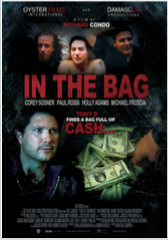It has been a tough run for Canadian investors, especially those who have stayed closer to home when it comes to their equity portfolios.
So far, the S&P TSX is among the worst performing markets in the world this year; over a longer horizon, it doesn’t get much better, with Canadian equities having delivered a paltry 4 per cent annualized return over the past decade.
Throw in fairly flat bond returns and it’s not a good scenario for conservative balanced investors.
Given those results, it isn’t surprising to see the plethora of advice recommending Canadian investors shift their portfolio allocations toward other markets, including the much stronger performing, technology-heavy, U.S. equity market.
While having an internationally diversified portfolio is prudent advice, valuations should also play a part in determining such weightings. In the case of Canada, in our opinion, underperformance is presenting some excellent value opportunities, which are a rare commodity these days.
For example, the S&P TSX currently offers an additional one per cent dividend premium to the S&P 500 and is trading at a 2X multiple discount on forward earnings. In particular, the interest rate sensitive sectors within the Canadian market have been hit the hardest as investors have bought in to the pervasive hawkish narrative on the Bank of Canada.
In our opinion, proceeding with interest rate hikes given the potential challenges facing the Canadian economy is not only reckless but foolish. Take, for example, the following economic risks: the termination of the Trans Mountain pipeline expansion; the acceleration of capital outflows as a result of Bill C69, which will change the environmental assessment regime; material tax hikes from the implementation of a national carbon tax program and recent changes hitting small business owners; NAFTA negotiations that have yet to be completed; and finally, a debt-heavy consumer over-exposed to what appears to be the early stages of a correcting housing market.
Despite this narrative, investors are still drinking the higher-rate Kool Aid and have reacted by hitting the sell button on anything with a sizable dividend. Combine this with what appears to be the later stages of the business cycle and we think there is a good opportunity here.
Take the utilities sector, for example, which has been hit particularly hard with the S&P TSX Capped Utilities Index selling off more than seven per cent this year. The debt-heavy pipeline companies have been among the hardest hit losing 10 to 21 per cent of their value. Consequently, the dividend yields are quite attractive ranging from 4.5 to nearly 7 per cent for large blue-chip companies.
The S&P TSX Capped Telecommunication Services Index is also down by nearly 7 per cent this year with dividend yields of the top constituents currently at 4.5 to 5.5 per cent. The S&P/TSX Capped Financials Index has contracted nearly 5.5 per cent this year with dividend yields among the larger blue-chip names ranging from 3.5 to 4.5 per cent.
For those investors looking for growth, there remains a disconnect between oil prices and oil stocks, with many companies trading where they did when oil was at much lower levels. These include some companies with diversified operations that are therefore not exposed to infrastructure challenges.
Finally, some well-run Canadian consumer stocks have also been hit hard, selling off as much as 15 to 20 per cent and erasing nearly two years’ worth of returns.
In conclusion, while international diversification is always recommended, there are times when it’s worth sticking a bit closer to home despite the economic challenges ahead. While the past decade hasn’t been kind for those Canadian investors who did, perhaps now is the time this will finally change.
Martin Pelletier, CFA is a Portfolio Manager and OCIO at TriVest Wealth Counsel Ltd, a Calgary-based private client and institutional investment firm specializing in discretionary risk-managed portfolios as well as investment audit and oversight services.

















